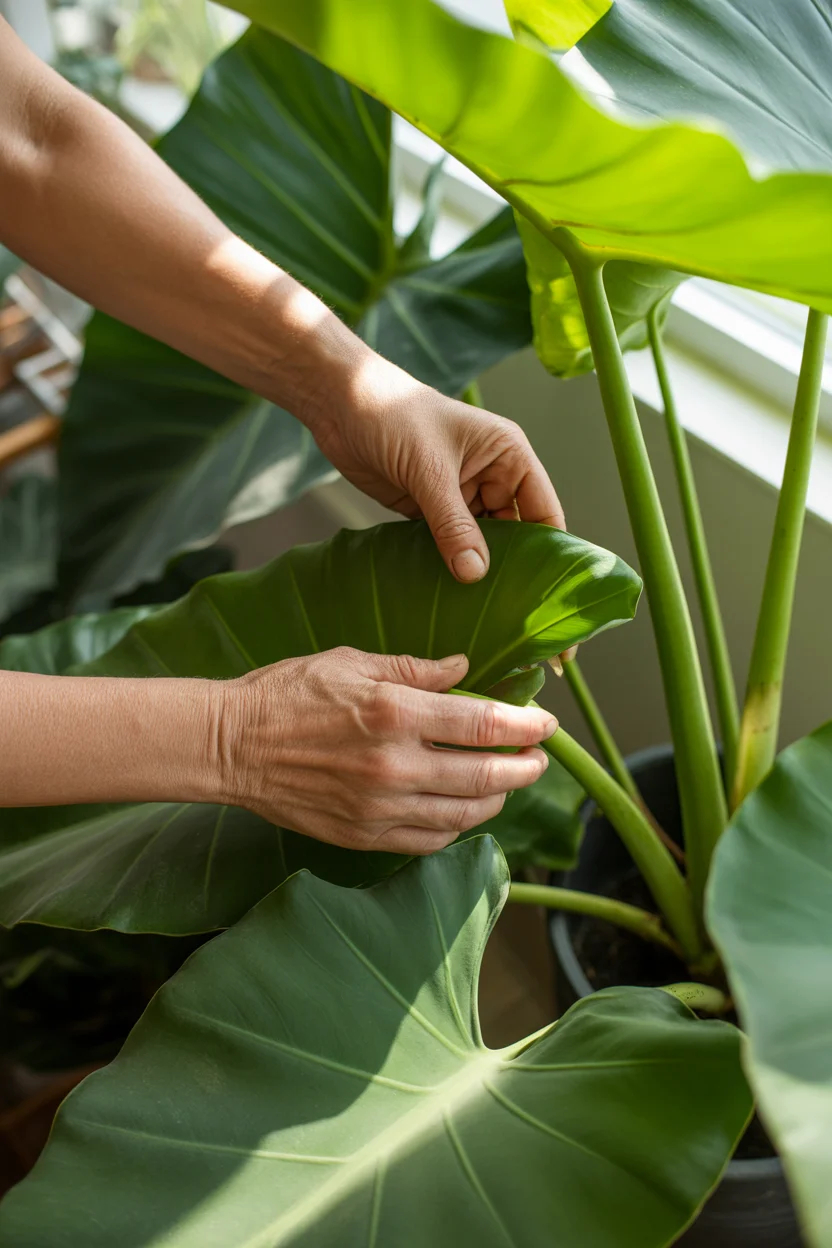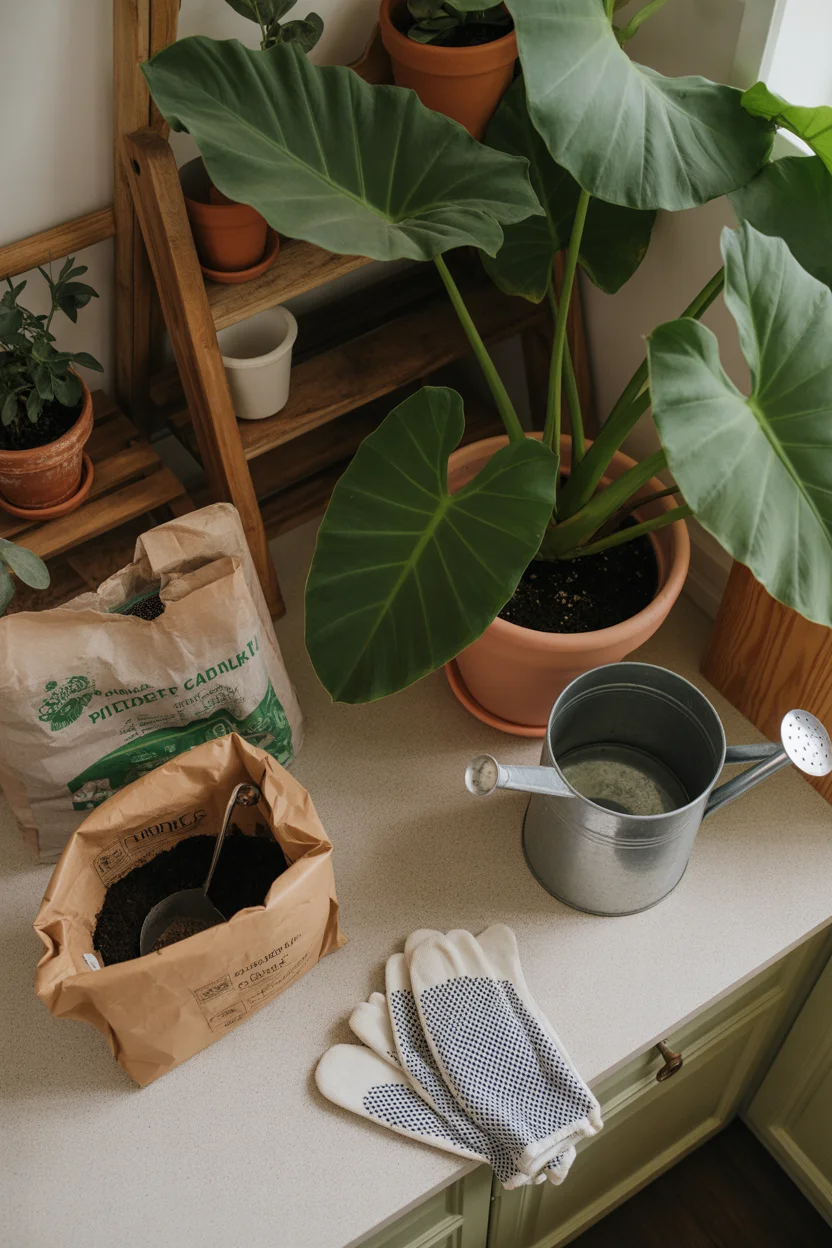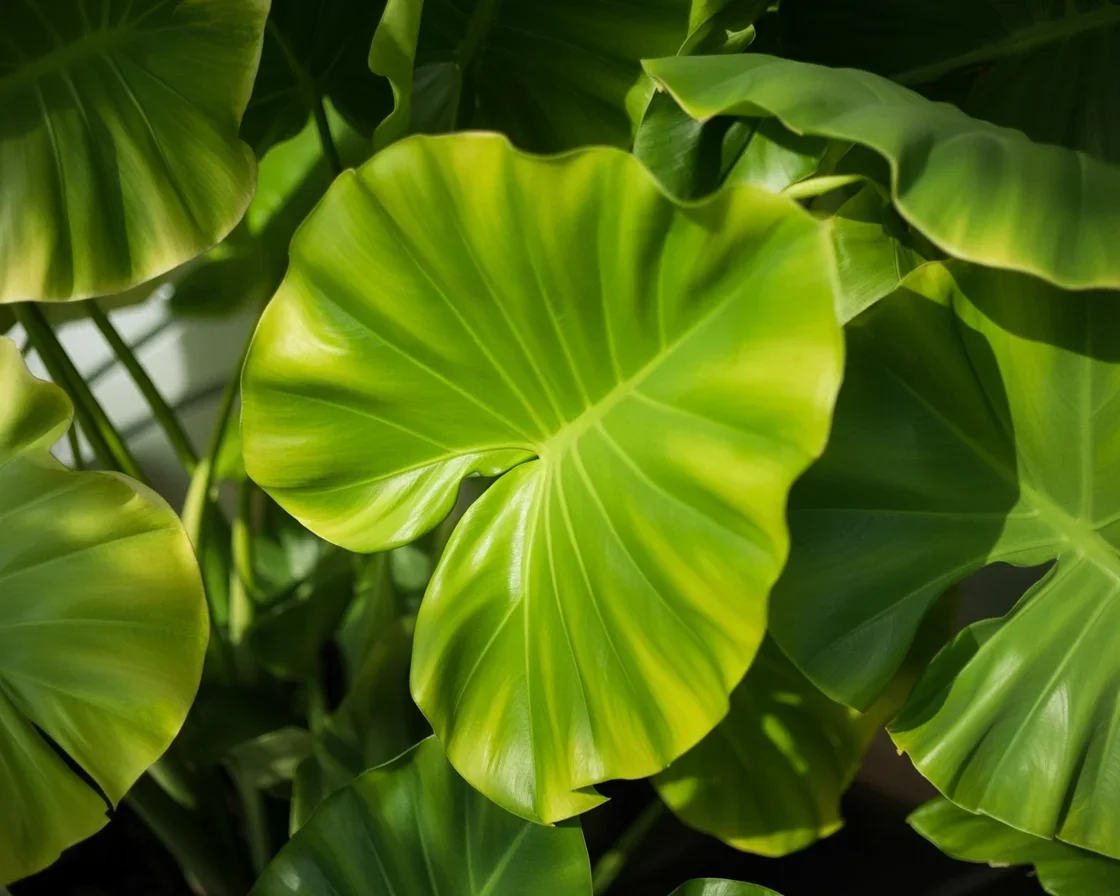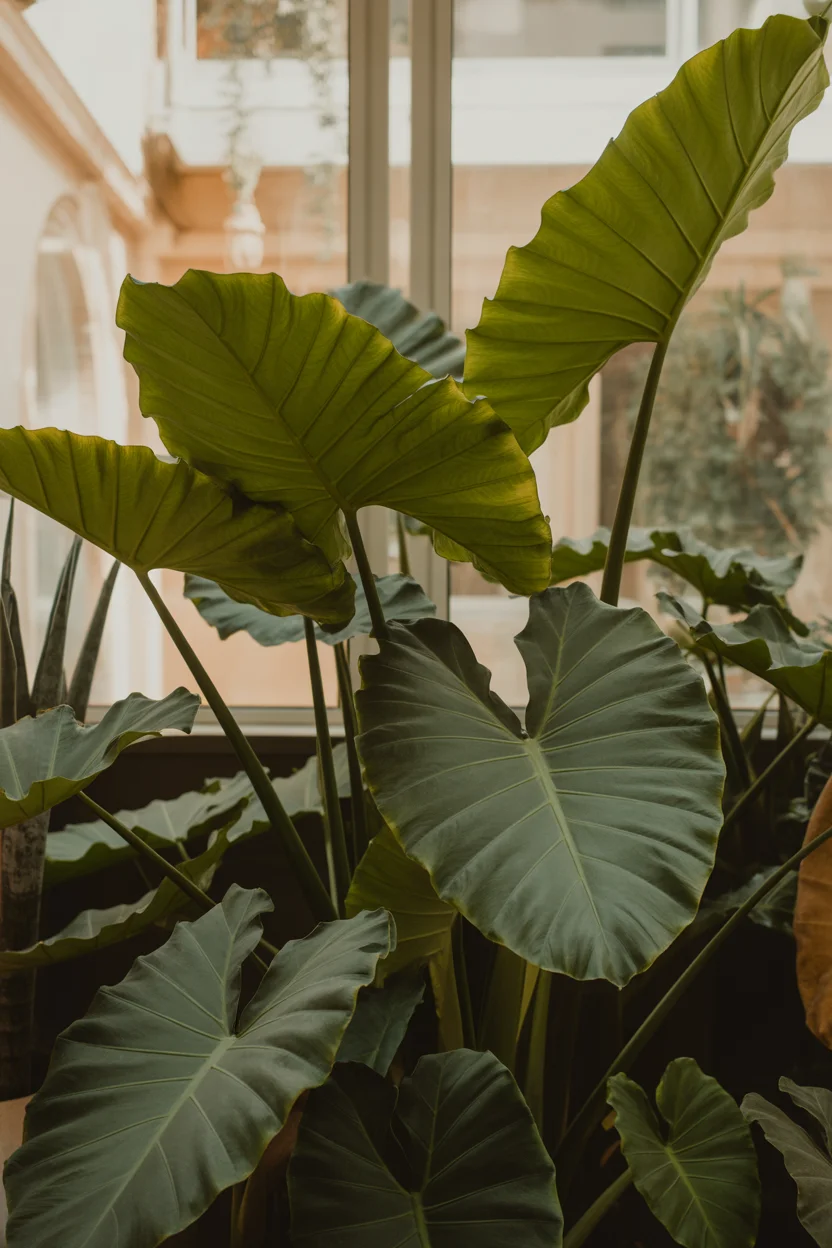Elephant ear plant care can make you scratch your head—trust me, I was there once, staring at my droopy leaves, wondering how I messed up something that grows wild in the jungle. Been tempted to give up? Same here. But hang on, thriving jumbos are totally do-able at home. This post’s for anyone ready to turn droopy, spotted, or pale elephant ear plants into lush, head-turning beauties. You guys, if you’ve ever struggled with picky houseplants like I did with my Carmen Jane (see here for an easy step-by-step guide), or if you had wild adventures growing a China Doll plant, let’s make elephant ears your comeback story.
Table of Contents
About elephant ear plants
These plants are just—how can I say—outrageously bold. Giant, heart-shaped leaves wider than my head (and I do have a big head) and a tropical vibe that makes your living room look like you’re in a rain forest. Elephant ear plant care is simpler than people think—don’t let those dramatic leaves fool ya! Mine actually grew faster once I relaxed about the perfect routine and just listened a bit. Alocasia and Colocasia are both called elephant ear plants (didn’t know at first, ha), and both like warmth, humidity, and a little kindness. My mom always says, “Don’t fuss, just check the soil with your finger. You’ll know.” She’s right. Oh, and bonus: sometimes they sprout baby runners. Best day ever.
How much light does my elephant ear plant need?
Ok, if there’s one thing elephant ear plant care can trip people up on, it’s lighting. These show-offs like it bright but not scorching. Stick yours near a north or east window if you can. South windows? Maybe, but yank them a couple feet back unless you want fried leaves. I learned the hard way—crunchy leaf edges within a week (ugh). If you spot pale leaves or a sad “reaching” plant, just shuffle it a bit closer to the light. Direct sun all day is a big nope, but deep shade—also a nope. So much fuss over light, right? But get this dialed, and your plant will thank you in a week. 
How often should I water my elephant ear plant?
Watering. The classic plant struggle. My elephant ears are basically like fickle toddlers about this—they want a drink but not a soggy bath. I poke my finger in the top inch of soil every couple days. If it feels dry, give it a good soak. If it’s damp, hold off—plant-parent patience is a real thing. In summer, mine want water maybe twice a week. Winter? Sometimes every fortnight. Go figure. (I literally overwatered my first one and almost tossed it. Don’t be me.) Never let them sit in water. Their roots despise wet feet, like cats hate baths.
Here’s a quick look to help you avoid a droopy disaster:
| Season | How Often to Water | What to Look For | Pro Tip |
|---|---|---|---|
| Spring/Summer | 1-2 times a week | Soil feels dry about 1 inch deep | Draining tray is your friend |
| Fall/Winter | Every 10-14 days | Leaves slow down, don’t overwater | Reduce watering a lot |

Types of Elephant Ears
Alright, so not all elephant ears are created equal. You get Alocasia, Colocasia, Xanthosoma, and a couple oddballs. Some stand tall and proud, others flop out wide and low. My favorite so far? Colocasia ‘Black Magic’—almost spooky with those dark leaves (add it to your wish list). Alocasia amazonica’s a dime a dozen at garden centers, but for good reason—those veins are wild. Different types want slightly different care… but overall, treat them with humidity and steady warmth and you’ll be fine. Got pets? Good to check out houseplants safe for cats and dogs on Bloomingreen—these aren’t one of them, sadly!
Common Issues With Elephant Ears
Whew, get ready – these guys are divas. Elephant ear plant care means watching for yellow leaves, brown edges, or spots out of nowhere. Overwatering? Yellow leaves. Dry air? Crispy brown tips. Sometimes, spider mites throw surprise parties. I wipe the leaves with a damp cloth every week—totally worth the trouble to stop bugs and dust. If leaves droop dramatically, usually just thirsty or chilly. Rarely, root rot sets in (if so, toss that soggy soil out and repot fast).
“My elephant ear always looked lifeless until I moved it out of the direct sun and stopped drowning it every time it drooped. Seriously, less is more—I finally have three new leaves in one month!” – Jess, Brooklyn (she knows her stuff!)

Do elephant ear plants need sun or shade?
Here’s where most people get tripped up (even garden pros fumble sometimes, trust me). Elephant ear plant care means giving them the good stuff: bright, indirect sun. Not direct sun—you wouldn’t put your head under a blowdryer all day, right? Not deep shade either. Think “dappled sunlight under a tree,” like they’re out in the wild, soaking up the filtered goodness. If your only option is high noon sun, use a sheer curtain! Nobody wants a sunburned Alocasia.
How do you care for a potted elephant ear plant?
Caring for a potted one’s way easier once you break it down. Here’s what I swear by:
- Use a pot with a big drainage hole. Trust me, this is key.
- Potting soil should be airy and rich, not heavy clay stuff.
- Water regularly, but let the top inch dry out between waterings.
- Wipe leaves (I do it with a damp microfiber cloth) every few days to keep them breathing and happy.
When I switched to a bigger pot, wow, it went nuts with growth. Also—keep them away from cold drafts. My back door spot made mine pout all winter!
Can I put my elephant ear plant outside?
Short answer? Yes, totally, but there’s a catch. Elephant ear plant care outside means only during warm months—think late spring to early fall. I move mine out once nights stay above 60°F. Sudden outdoor sun can shock them, so start in shade and slowly introduce more light (like introducing new foods to a picky kid). If it gets chilly, or frost’s coming, haul them back indoors fast. And, potted ones do great on a porch or shaded balcony—high drama, zero effort. Hungry squirrels? Fair warning, they like elephant ear bulbs as much as we do potatoes.
If you’re looking to brighten up outdoor or indoor spaces with more plant pals, these shade-loving container plants keep good company with elephant ears.
Ready to Go Jungle Mode at Home?
You’ve now got the basics of elephant ear plant care, from getting the light juuust right to not drowning those roots. Remember: patience, a little regular leaf-wipe, and good vibes go a long way. Try it—see if those leaves don’t turn into five-star, rain forest–worthy showstoppers. For hardcore details (or if you’re a spreadsheet person), the Complete guide to elephant ear plant care has your back. Plus, more inspiration is always good—don’t forget the best indoor plant picks to brighten your space too. Go make your living room wild! 
FAQ about Elephant Ear Plant Care
Do elephant ear leaves get smaller over time?
Not usually! If you see smaller leaves, it probably needs more light or a bigger pot.
Why are my elephant ear leaves turning yellow?
Oof, usually overwatering or bad drainage. Just back off with the watering and check that soil.
Can I grow elephant ears in only water?
Not long-term, sadly. They can sprout in water but need real soil to thrive, unless you’re going for a very temporary look like in this guide about water plants.
Do they go dormant in winter?
Yup. They’ll slow down, drop some leaves, or even disappear. Don’t toss them—just water a smidge less and wait for spring!
Should I fertilize?
Oh yes, but not all the time. A basic houseplant fertilizer once a month in spring and summer works for me.

